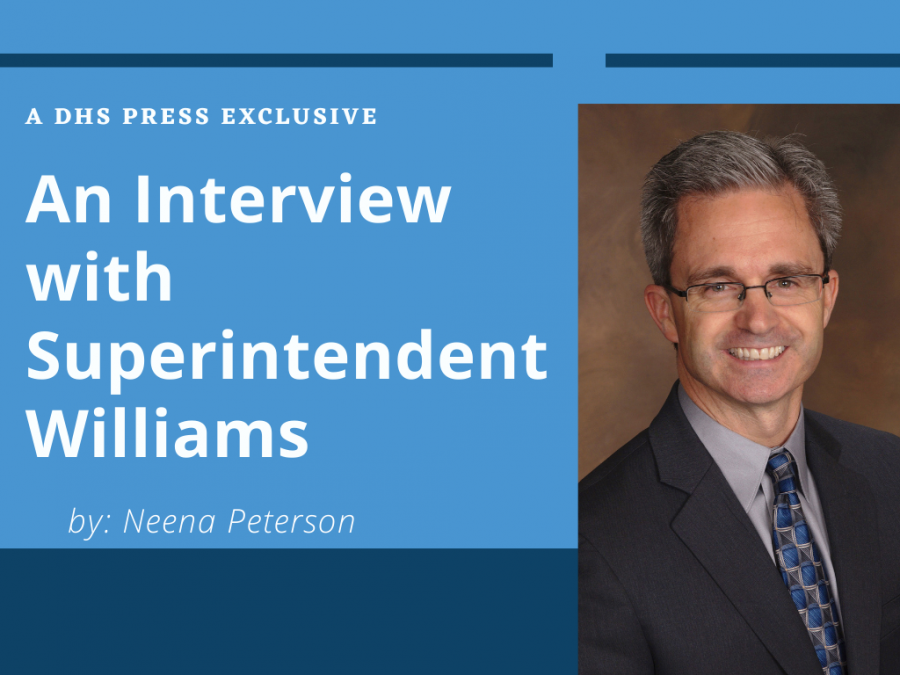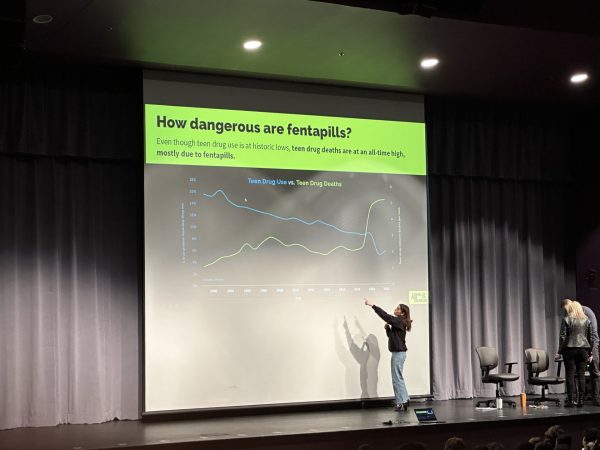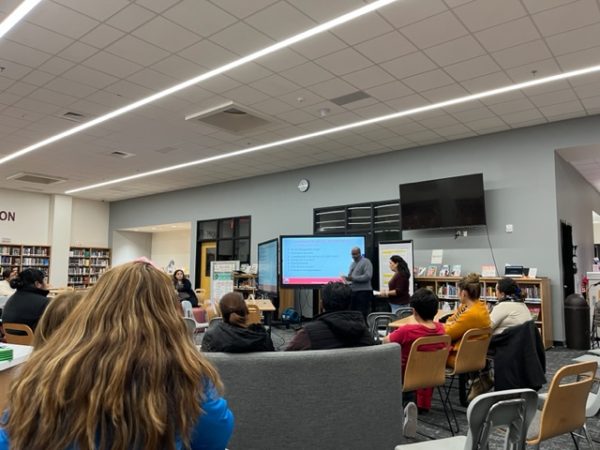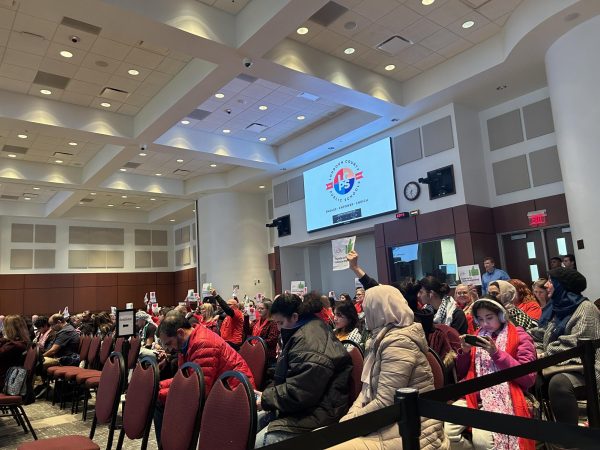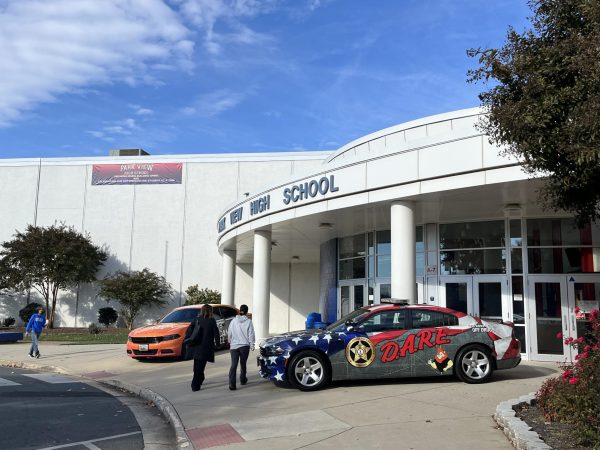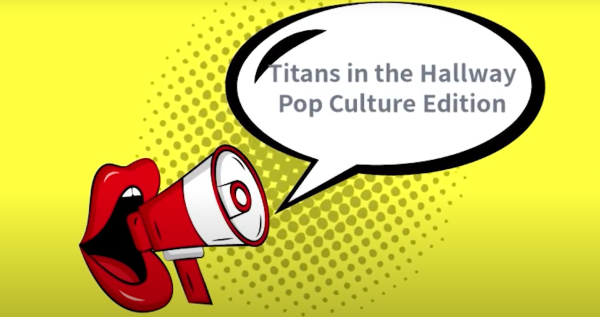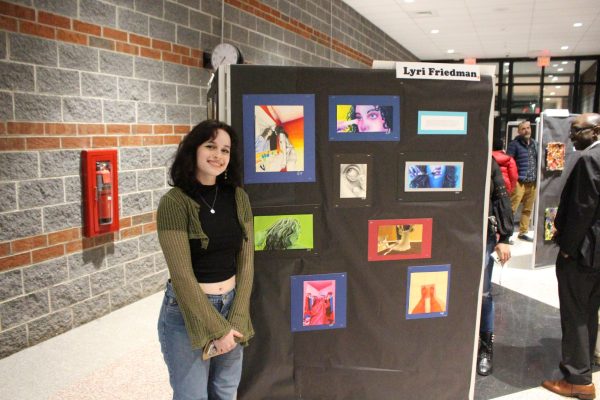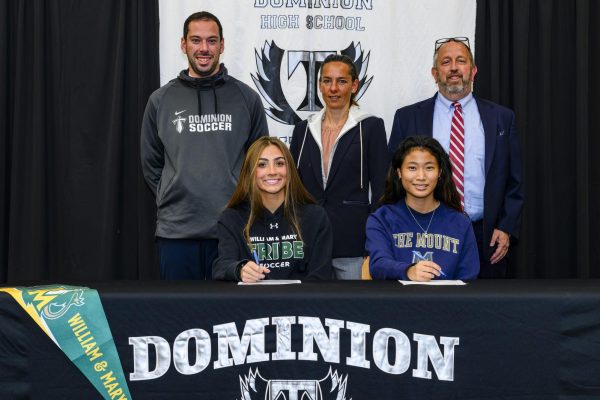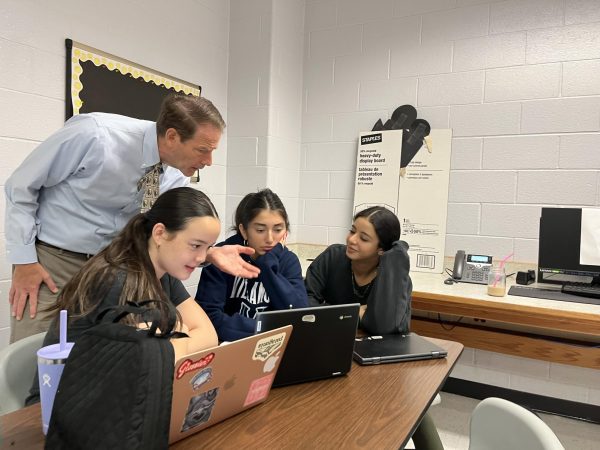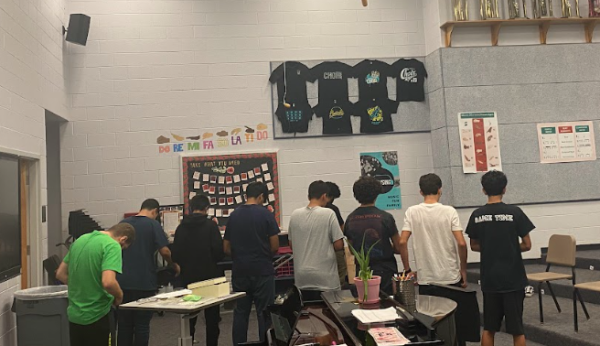A Special Interview with Superintendent Williams
As students await the next decision that impacts distance learning, Superintendent Williams answers questions that directly impact Dominion students.
Q: What is your opinion of the ABAB schedule change made in the school board meeting last Tuesday? What prompted that change when it didn’t happen at the start of the first quarter?
A: The school board received feedback from many students, that felt like the schedule, in terms of AABB, was more stressful. Now, some teachers and students don’t feel that way, but board members were hearing from students who did feel that it was more stressful, feeling that not all teachers allow students a full week to complete assignments, and that they felt stressed having to do certain preparations just in one night. So, the motivation was to help students, even if it’s only a help for some students, in terms of managing workload.
Q: What, in your opinion, is the most likely implementation of Stage 4 for secondary schools? (in terms of date, format, COVID conditions to do so, regulations to be put in place)
A: Staff has been focusing on planning for implementation of the hybrid model for secondary students as of the start of the second semester, and district level staff are working with principals on different options in terms of exactly what that would look like. In terms of COVID conditions, the Centers for Disease Control (CDC) has set forth core indicators that they think schools should look at, so two key public health data points we’ll look at are 1.) the number of new cases in the last 14 days, and 2.) the number of positive COVID-19 tests in Loudoun County in the last 14 days. The third area from CDC is just being able to consistently implement mitigation strategies like physical distancing, and face coverings, so those are examples of public health conditions that would be considered in terms of deciding to move forward with the hybrid model for secondary students.
Q: What will the guidelines be for in-school students? (social distancing, masks, hallway, lunch, advisory, live streaming)?
A: Face coverings would be required at all times, except for students with documented medical exceptions, and there could be some structured and masked breaks, but generally speaking – regardless of one’s physical distancing – they would need to wear face coverings. The six feet of physical distancing would be required. There are some slight details that the board is looking: for example, would chairs within classrooms or desks be basically eight feet apart so that there’s six feet of distance? Or would the chairs themselves be six feet apart? So there are some details about that, that have not been, have not been finalized.
The school board is going to look at the proportion of students whose parents and guardians choose the hybrid model as well, because the more students choose the hybrid model, the harder it is to maximize the physical distances. Each day, students or their parents would complete for their son or daughter a symptom check, so that would be required and it’d be texted each morning or an email. As students arrive at school, there would be random temperature checks as well. Those are examples of some of the public health mitigation practices from the student perspective. There’s things that school staff would be doing on their end too; for example, more frequent cleaning of high touch surfaces.
Q: What will the consequences be for students who do not adhere to the guidelines?
A: The expectation is, to be able to continue to participate in in-person learning, students need to meet the expectations. At Monroe Advanced Technical Academy (MATA), which started on September 8 with the hybrid model, students have been very cooperative. As with any school expectation, there need to be reminders, but, generally speaking, people have been very cooperative. If someone’s struggling to meet that expectation, staff are going to work with that student and their parents, and then ultimately, in order to continue in person learning, the students would need to meet the expectations.
Q: How will it work for DL students?
A: They would still have classes to come to. They would still have some synchronous time. The other thing about the model, in terms of exactly what it looks like for secondary students, it’s still being worked on with principals in terms of the way in which they would connect with classes.
Q: How do you feel distance learning is working at the high school level?
A: Distance learning absolutely is not a replacement for in-person learning. I am so impressed with how teachers and students are trying to make the best of a difficult situation, but we’d be fooling ourselves if we said it was the same. We want to get back to 100% in-person learning as soon as possible, as long as it’s safe to do so. And so, I think students and teachers are working hard to make the best of the difficult situation. It’s a stressful time in general – separate from school and one’s work as an educator – a stressful time living life in a pandemic. That stress is also reflected whether one student in school or a teacher working, trying to make the best difficult situation, so I think it’s a tough time.
Q: With all of the rules in place at most high schools about the amount of work that teachers can give outside of synchronous time, do you expect those to continue once we are in a hybrid model? Why stay the same? Why change?
A: These standards will be maintained for the transition to hybrid. The concept is that there’s still distance learning for students, whether that’s a part of a hybrid model or just standalone, and we want to have a high quality experience for students that’s manageable, along with some level of consistency for students across schools.
Q: How will the administration handle it if a large number of teachers cannot return medically and/or take a leave of absence?
A: So far, our data shows that we’ll have sufficient staffing to meet the needs of our students. Right now, approximately 600 employees have been approved for distance learning assignments, based on medical needs, and 120 were also granted leave because of childcare needs. If additional staff members are needed, we would assign substitute teachers to each building based on the number of teachers, and they would report to cover last minute absences, for example. The human resources department surveyed substitute teachers, and had 1900 people respond that they’re willing to work teaching in-person, so we will continue to monitor that. As we talk about the data we need to proceed at each stage, a key criteria is making sure we have sufficient staff, so it’s certainly something we’re monitoring but we’ve not identified problems at this point in time.
Q: How difficult is it to balance the needs and wishes when everyone seems to be on polar opposite sides of the spectrum, knowing one side will be happy and one will be furious?
A: We understand that people have diverse opinions, and also that they’re passionate about those opinions. We get that there’s going to be passion on the issue: it’s a reflection of caring about education. So whether it’s students valuing the experience, both for the academic wages or valuing extracurriculars, that’s part of developing as a young person. The same thing goes with parents: they want the best for their sons and daughters. So really, we just need to make the best decision possible, recognizing that we want to get to hundred percent in-person learning as soon as possible, as long as we can do it safely.
Q: Is the administration going to examine the grading policy again after first quarter grades are finalized?
A: LCPS staff members are not planning changes, but we are having conversations with school board members about it. For example, there’s a curriculum instruction committee of the school board that meets in their meeting tomorrow morning, and I know they’re asking for us to share some information about the topic. At this point time, there’s no planned changes.
Q: What are your expectations for winter sports, that’s slated to start on December 7th? Do you feel that all sports are safe enough to begin? Why or why not?
A: The public health mitigation practices, including physical distancing, face coverings, temperature checks, all of those are important. We also have staff members that are assigned to new roles that we refer to as “public health mitigation monitors” who are not affiliated with the athletic program or even members of a particular school, to be out-and-about observing some of the practices and making sure that public health mitigation practices are followed. They are really supporting the efforts of coaches and administrators in terms of being consistent, so their job would be to give a heads-up to coaches and administrators if they’re observing inconsistency in the practices. However, we really expect that student-athletes are going to be committed to following those practices, because they’ll quickly realize that, if they’re not and there’s a positive case which leads to quarantine, a public health risk arises for their teammates. It also would disrupt their ability to practice and compete. We have had, generally speaking, good commitment from student-athletes already and we expect that to continue. I know students are excited about practices starting up eventually on December 7, which seems like a long way away, and contests starting at the end of December.
Q: Do you believe that students should be allowed to attend winter sports contests if they are not currently attending school in-person? Why or Why not?
A: We will be further receiving information from VHSL, under spectators, so that’s really going to have a big impact. For example, under the current Phase 3 restrictions, only 250 people, including participants, are allowed to attend an event. So, depending on the number of athletes, that could have a big impact. We would not be distinguishing, in terms of spectators or athletes, whether or not one is choosing to be a distance learning or hybrid model participant. Once the second semester starts, that wouldn’t affect one’s eligibility to participate as an athlete or as a spectator – recognizing that spectator participation is going to be contingent upon whatever rules are in place at that point in time.
Q: The most important question that students want the answer to – will there be snow days? If not, what will Wayde Byard do this winter?
A: If there’s a snow day, people would still be able to hear Wadyde Byard’s distinctive voice in the evening or morning. So that’s the bottom line that people need to know. The more serious answer is, the Virginia Department of Education has set forth requirements that we’re looking at if schools wanted to use distance learning setup in order to not declare a day as a snow day. There’s several requirements, for example, needing to have meals available for students and a variety of other things. We’re still looking at that, but even if we wanted to continue on with distance learning and not have a snow day, we’re not sure we’d be able to comply with all the department state regulations.
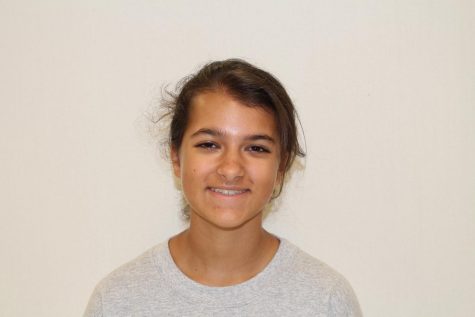
Neena Peterson, the Co-Editor-in-Chief, is a four year reporter for DHS Press, first writing for the newspaper in 2018. They prefer to focus on pieces...



